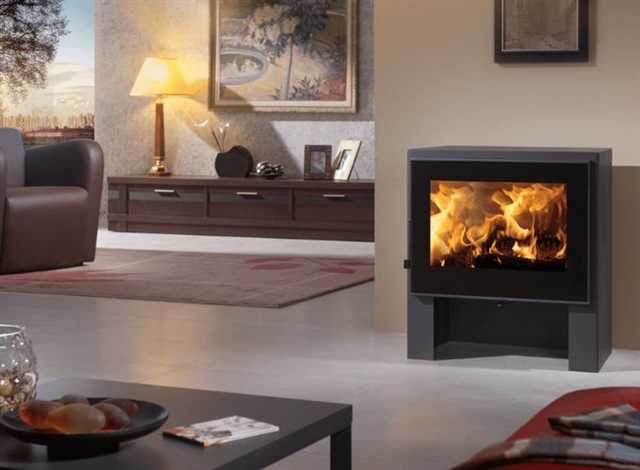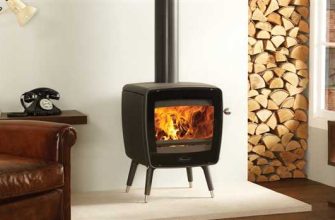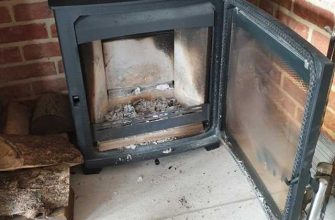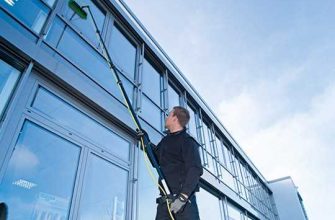
If you own a modern wood burning stove, you know how important it is to keep it clean and well-maintained. Regular cleaning and maintenance not only help to keep your stove looking its best, but it also ensures that it operates efficiently and prolongs its lifespan. In this article, we will share some of the best tips and tricks for cleaning and maintaining a modern wood burning stove.
When it comes to cleaning the exterior of your wood burning stove, a simple wipe down with a damp cloth should do the trick. However, if there is soot buildup on the surface, you may need to use a soot remover or a specialized cleaning product. It’s important to remove any soot or buildup from the exterior as it can cause damage and make your stove look worn.
If you notice any scratches or wear on the exterior, you can easily touch them up by painting over them. Just be sure to use a heat-resistant paint that is suitable for wood burning stoves. Apply the paint carefully and allow it to dry before using the stove again. This will not only protect the exterior of your stove, but it will also give it a fresh and clean look.
Cleaning the interior of your wood burning stove is just as important as cleaning the exterior. Start by removing any ash or debris from the firebox using a shovel or a vacuum cleaner. Be sure to wear protective gloves and a mask to avoid inhaling any dust or soot. Once the firebox is clear, you can then clean the rest of the interior using a damp cloth or a specialized cleaner.
One important part of maintaining a wood burning stove is to regularly check the seals and gaskets. Over time, these seals can wear out or become damaged, which can cause air leaks and reduce the efficiency of your stove. If you notice any gaps or cracks, you can easily replace the seals or have them resealed to ensure a tight fit.
In conclusion, cleaning and maintaining a modern wood burning stove is essential to ensure its longevity and efficiency. By following these tips and tricks, you can keep your stove looking its best and enjoy the warmth and comfort it provides for years to come.
- Why You Should Learn How to Clean and Maintain a Modern Wood Burning Stove
- 1. Preserve the Look of Your Wood Burning Stove
- 2. Ensure Proper Functioning
- 3. Prevent Potential Hazards
- Proper Methods for Cleaning and Maintaining a Wood Burning Stove
- The Importance of Regular Maintenance
- 1. Prevents Soot and Creosote Buildup
- 2. Maximizes Efficiency
- 3. Extends the Lifespan of Your Stove
- 4. Ensures Safe Operation
- 5. Enhances the Appearance
- Top Tips for Cleaning Your Wood Burning Stove
- How to Properly Reseal the Hearth
- 1. Remove any old rope seal:
- 2. Clean the surface:
- 3. Dampen the new rope seal:
- 4. Carefully apply the new seal:
- 5. Inspect for proper ventilation:
- 6. Regularly maintain and clean:
- Common Mistakes to Avoid
- Video:
- These WOODSTOVE MISTAKES Are Costing You Time andamp; Money!
Why You Should Learn How to Clean and Maintain a Modern Wood Burning Stove
Cleaning and maintaining a modern wood burning stove is an essential task that every stove owner should learn how to do. Regular maintenance not only keeps your stove looking clean and beautiful, but it also helps to protect the wood burning stove and ensure that it functions properly.
1. Preserve the Look of Your Wood Burning Stove
A well-maintained wood burning stove can be a beautiful centerpiece in any room. However, over time, soot and ash can build up on the surface of the stove, causing it to look dirty and dull. By regularly cleaning and maintaining your wood burning stove, you can keep it looking brand new and enhance the overall aesthetic of your space.
2. Ensure Proper Functioning
Cleaning and maintaining a wood burning stove is not just about appearances. It also plays a crucial role in ensuring that your stove functions properly. Regular cleaning helps to remove any buildup of soot, ash, or creosote, which can obstruct the airflow and prevent the stove from burning efficiently. By keeping the interior and gaskets of your stove clean, you help to maintain a clear and effective source of heat.
3. Prevent Potential Hazards
A dirty and poorly maintained wood burning stove can pose safety risks. A buildup of soot and ash can increase the likelihood of a chimney fire. Additionally, a wood burning stove that is not properly cleaned and maintained may have damaged parts, such as rusted components or worn-out gaskets, which can lead to leaks or other malfunctions. Regular inspection and cleaning can help identify and address any potential hazards before they become serious problems.
Proper Methods for Cleaning and Maintaining a Wood Burning Stove
- Regularly check the exterior of your wood burning stove for any signs of rust or damage. If rust is present, remove it using a wire brush, sandpaper, or a rust dissolver. After removing the rust, you may choose to paint the exterior of the stove with high-temperature stove paint to protect it from future damage.
- Clean the interior of your wood burning stove. Start by removing any ash or soot using a vacuum or a shovel. Be sure to wear protective gloves and a dust mask when doing this task, as the ash and soot can be harmful if inhaled. Next, clean the interior surfaces of the stove with a mixture of warm water and mild soap. Use a soft cloth or sponge to gently scrub away dirt and stains. Avoid using abrasive cleaners or scrub brushes, as they can cause scratches and damage the surface of the stove. Finally, dry the interior completely to prevent rusting.
- Inspect and clean the gaskets of your wood burning stove. Over time, the gaskets can become worn out or damaged, leading to leaks and poor functioning. Check the gaskets regularly and replace them if necessary. Use a soft cloth dampened with warm water to clean the gaskets, being careful not to get them too wet or dampen the adhesive.
- Dispose of the ash and soot properly. Never dispose of hot embers or ashes in a plastic bag or a flammable container, as they can cause a fire. Instead, transfer the cooled ash and soot into a metal bucket and dispose of them in an outdoor area away from flammable materials.
By learning how to clean and maintain a modern wood burning stove, you can ensure its longevity, keep it functioning efficiently, and create a safe and cozy environment for your home.
The Importance of Regular Maintenance
Maintaining your wood burning stove is essential to ensure its optimal performance and longevity. Regular maintenance helps to keep your stove clean, efficient, and safe to use. Here are a few reasons why regular maintenance is important:
1. Prevents Soot and Creosote Buildup
During the burning process, wood releases particles that can accumulate on the interior walls of your stove, creating soot and creosote. Soot and creosote are highly flammable and can increase the risk of a chimney fire. Regular cleaning removes these substances and reduces the likelihood of a dangerous fire.
2. Maximizes Efficiency
Regular maintenance, including cleaning and inspecting the stove parts, helps to keep your wood burning stove running at its best. When there is a buildup of soot and ash, it restricts airflow and decreases the efficiency of the stove. By removing these obstructions, the stove can burn wood more efficiently, providing more heat and reducing fuel consumption.
3. Extends the Lifespan of Your Stove
A well-maintained wood burning stove can last for many years. By regularly cleaning and inspecting the stove, you can identify and address any minor issues before they become major problems. This proactive approach helps to extend the lifespan of your stove, saving you money in the long run.
4. Ensures Safe Operation
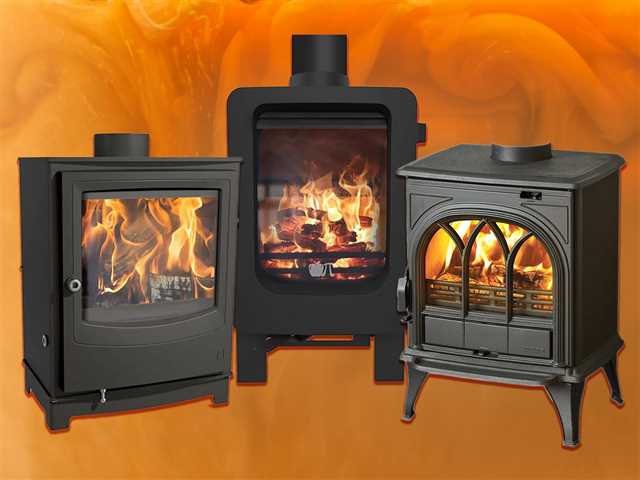
Regular maintenance allows you to check for any signs of damage or malfunction in the stove. This includes inspecting the door seals, gaskets, and other parts for proper functioning. By identifying and rectifying any issues early on, you can ensure the safe operation of your wood burning stove and reduce the risk of accidents.
5. Enhances the Appearance
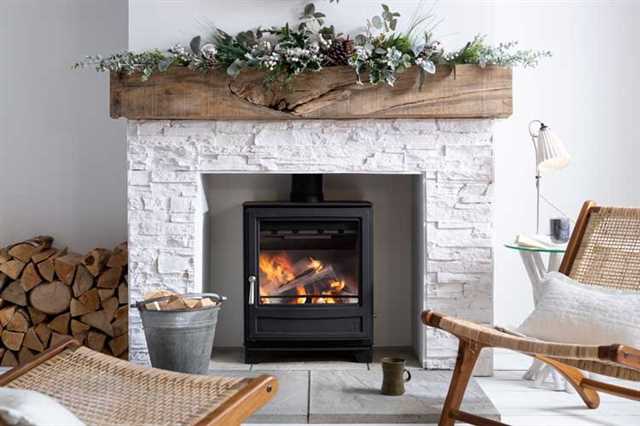
A well-maintained wood burning stove adds a touch of elegance and warmth to any space. Regular cleaning not only improves the stove’s performance but also helps to maintain its aesthetic appeal. By removing dirt, stains, and scratches from the exterior surface, you can keep your wood burning stove looking beautiful.
Regular maintenance is crucial to keep your wood burning stove in top condition. It is recommended to follow the manufacturer’s guidelines and perform maintenance tasks, such as cleaning and inspecting, at least once a year. By taking care of your stove, you can enjoy its warmth, efficiency, and beauty for many years to come.
Top Tips for Cleaning Your Wood Burning Stove
Maintaining a clean and efficient wood burning stove is essential for optimal performance. Regular cleaning will help ensure that your stove functions properly and lasts for many years to come. Here are some top tips for cleaning your wood burning stove:
- Be aware of the materials used in your stove: Modern wood burning stoves are typically made of steel or cast iron, while some may feature slate or other materials on the exterior. Understanding the materials used in your stove will help you determine the best cleaning methods.
- Take precautions before cleaning: Before cleaning your stove, ensure that it has cooled down completely. It is also important to disconnect it from the fuel source and, if possible, move it outside to a designated cleaning area.
- Use proper cleaning tools: When cleaning the exterior of your wood burning stove, use a soft cloth or wool pad rather than abrasive materials that can scratch the surface. For cleaning the interior, use a vacuum cleaner specifically designed for high-grade soil and ash.
- Start with the exterior: Begin by wiping down the exterior of the stove with a damp cloth. If there are stubborn stains or rust spots, use a mild soap or stove cleaner to remove them. Be sure to follow the manufacturer’s instructions when using cleaning products.
- Inspect the firebox and flue/chimney: Regularly inspect the firebox and flue/chimney for any signs of damage or buildup. Remove any soot or debris that may have accumulated inside. Clean the flue/chimney by using a chimney sweep or professional service to ensure proper functioning.
- Clean the gaskets: The gaskets around the door of your wood burning stove help create a proper seal. Inspect them regularly and replace any damaged gaskets. Clean the gaskets using a damp cloth, and avoid using harsh chemicals that may degrade the material.
- Focus on the hearth: Clean the hearth thoroughly to remove any ash or debris that may have accumulated. Use a vacuum or a brush and dustpan to remove the bulk of the ash, then wipe down the surface with a damp cloth. If necessary, you can also apply a hearth cleaner to remove any stains or discoloration.
- Keep up with routine maintenance: In addition to regular cleaning, make sure you schedule routine maintenance for your wood burning stove. This includes checking and replacing any worn-out parts, inspecting the chimney, and ensuring the stove is functioning efficiently.
By following these tips, you can keep your wood burning stove in good condition and enjoy the cozy warmth it provides during the winter months. Remember to always prioritize safety when cleaning and maintaining your stove.
How to Properly Reseal the Hearth
If you have a modern wood-burning stove, one of the most important maintenance tasks you should remember is to regularly reseal the hearth. The hearth is the area around the stove where it meets the floor, and if it is not properly sealed, heat can escape and cause damage to the surrounding areas. Here are some tips on how to properly reseal the hearth:
1. Remove any old rope seal:
Before you begin resealing the hearth, you should remove any old rope seal that might be present. Use a scraper or a flathead screwdriver to carefully remove the old seal, making sure not to damage the surrounding parts of the stove.
2. Clean the surface:
Once the old seal has been removed, use a brush or a vacuum cleaner to clear away any ash, charcoal, or soot that may be on the surface of the stove or hearth. It is important to have a clean surface before applying the new seal.
3. Dampen the new rope seal:
Before applying the new rope seal, it is a good idea to dampen it with water. This will make it easier to manipulate and ensure a better seal.
4. Carefully apply the new seal:
Using a rope seal kit or a similar product, carefully apply the new seal around the wood burner. Make sure to follow the manufacturer’s instructions and apply the seal evenly, ensuring that there are no gaps or loose sections.
5. Inspect for proper ventilation:
Once the seal has been applied, it is important to inspect the stove’s ventilation systems to ensure that they are clear and in good working order. Blocked or incorrectly installed ventilation systems can cause damage to the stove and pose a fire hazard.
6. Regularly maintain and clean:
To keep your wood-burning stove looking beautiful and functioning properly, it is important to regularly maintain and clean it. Wipe down the exterior surfaces regularly, and clean the interior with a brush or a shovel to remove any ash or debris. You should also have a professional inspection and maintenance done at least once a year.
By following these steps and properly resealing the hearth of your wood-burning stove, you can ensure that it remains in good condition and provides efficient heating for many winters to come. Just remember to wear protective gloves and eye wear when working with the sealant and to consult the stove’s manufacturer or a professional if you have any doubts or questions.
Common Mistakes to Avoid
- Not properly cleaning the inside of the stove: One common mistake is neglecting to clean the inside of the wood-burning stove regularly. Over time, soot and other debris can build up, which can reduce the stove’s efficiency and potentially cause a fire hazard. It is important to clean the firebox, flue/chimney, and other internal parts of the stove to keep it functioning optimally.
- Using the wrong fuel source: Another mistake is using the wrong type of fuel in the wood-burning stove. It is important to choose the best fuel for your stove, such as seasoned hardwood, to ensure efficient and clean burning. Avoid using painted or treated wood, as it can release harmful chemicals when burned.
- Not maintaining proper ventilation: Adequate ventilation is crucial for a wood-burning stove. Failing to provide enough ventilation can lead to a build-up of smoke and dangerous gases in your home. Make sure your stove is properly installed and that the flue/chimney is clear of obstructions.
- Not protecting the surface of the stove: The exterior surface of a wood-burning stove, whether it’s made of cast iron or steel, can be prone to wear and marks. To protect the surface, avoid using abrasive chemicals or scrubbing brushes. Instead, use a soft cloth and mild soap or a specialized stove cleaner. Regularly applying a high-temperature paint or oil can also help maintain the stove’s appearance.
- Not sealing the doors properly: The doors of a wood-burning stove should be tightly sealed to maximize heat efficiency. If you notice any gaps or leaks around the door, you should replace the rope seal. A properly sealed door will ensure a safe and controlled fire.
- Failing to remove ash and soot regularly: It is essential to regularly remove ash and soot from your wood-burning stove. If not removed, these residues can reduce the stove’s efficiency and cause damage over time. Wait for the stove to cool down completely before cleaning out the ash and soot. Use a scoop or vacuum designed for this purpose.
- Not investing in a proper sweeping system: To keep your flue/chimney clean and safe, it is important to have it swept regularly. Hiring a professional chimney sweep or investing in a suitable chimney sweeping system is essential to remove soot, creosote, and any debris that may have built up.
- Ignoring signs of wear and tear: Regularly inspect your wood-burning stove for any signs of wear and tear, such as cracks, loose components, or damaged gaskets. Addressing these issues promptly can help prevent further damage and maintain the stove’s performance and safety.
Avoiding these common mistakes and following proper cleaning and maintenance practices will ensure that your modern wood-burning stove remains efficient, safe, and beautiful for many years to come.
